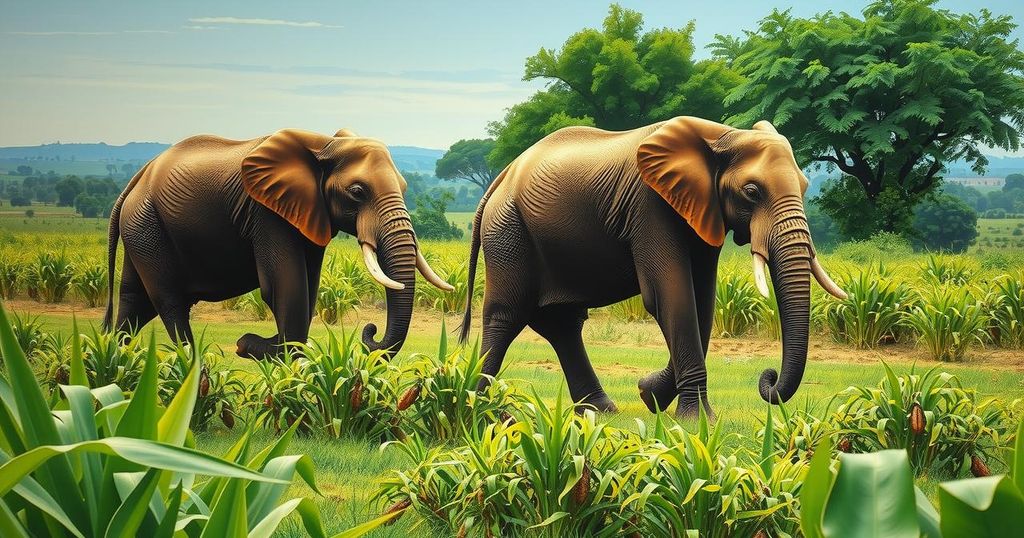In Kenya, the elephant population competes for resources with humans, leading to increased crop destruction and conflict as drought worsens. Conservation groups report that poaching has been replaced by human-wildlife conflict as the primary threat to elephants. Solutions like beehive fences and education are being promoted to foster coexistence between farmers and wildlife.
In Kenya, the challenge of elephants destroying crops has intensified as drought and dwindling resources drive these animals closer to human settlements. This conflict, known as “human-wildlife conflict,” has overtaken poaching as the leading cause of illegal elephant mortality in the country, according to conservation groups.
The increasing human population, in conjunction with climate change-related drought and resource scarcity, results in competition for space, food, and water between humans and elephants. Elephants often raid farms in search of food, prompting desperate farmers to retaliate against them.
Edwin Lusichi, head keeper at the Sheldrick Wildlife Trust, emphasized the effect of urban development: “The shopping malls, the roads, have been built on lands that used to belong to elephants and their migration routes,” illustrating the significant impact on wildlife resources in Kenya.
The situation has worsened with the spread of new commercial farms growing high-demand crops, leading to increased encounters between humans and elephants. In southern Kenya, rangers patrol farmlands nightly due to frequent conflicts. Ranger Daniel Kutata noted, “On a busy night, on a dry season, even 20 elephants can come and raid,” highlighting the pressures faced by farmers.
Organizations such as Big Life Foundation have implemented electric fences to safeguard farmers, though some elephants have adapted to this barrier. A Maasai farmer recounted losing approximately $4,000 after an elephant raid, underscoring the financial burden these conflicts impose on local farmers.
Save the Elephants is working with farmers to find innovative solutions; farmer Jonas Makima shared his struggles: “If an elephant gets onto the farm and raids everything, then it means now, you’ll not have food for the family,” stressing the serious implications for his livelihood.
Makima has developed various methods to deter elephants, including a beehive fence, which has proven to be highly effective by utilizing the elephants’ natural aversion to bees. Furthermore, he is collaborating with Save the Elephants to promote strategies for peaceful coexistence between humans and elephants.
Lusichi concluded, “People need to be educated, people need to know what to do when they encounter these animals in their farms,” calling for a broader understanding of the rights of wildlife and the necessity of preserving their habitats amidst growing human populations.
In summary, the escalating conflict between elephants and farmers in Kenya exemplifies the pressing challenges arising from climate change and human encroachment on wildlife habitats. Effective solutions, such as the beehive fence, along with education on coexistence, are essential for mitigating these challenges. These efforts highlight the importance of balancing human agricultural needs with the conservation of elephant populations, emphasizing a need for informed strategies for all stakeholders involved.
Original Source: abcnews.go.com




